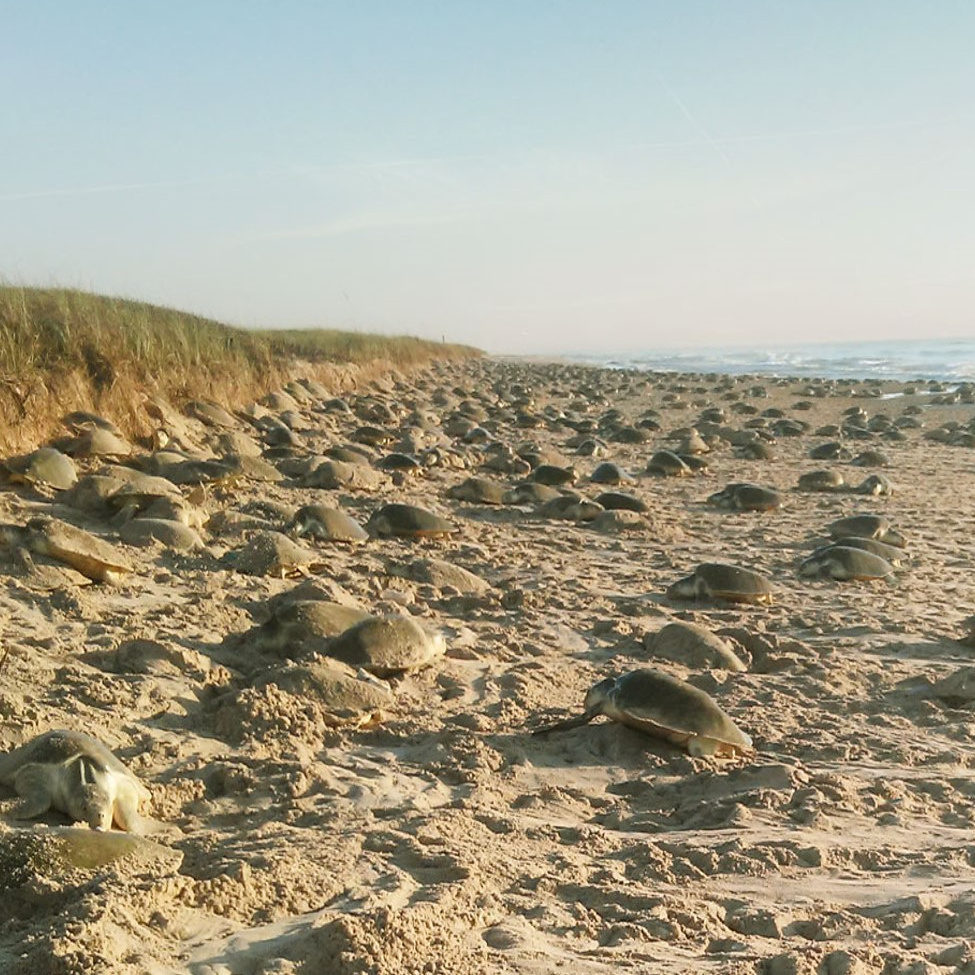Summary:
– The arribada, a mass nesting event, showcases the surreal phenomenon where sea turtles dominate beaches.
– Decades of conservation have led to remarkable recovery for Kemp’s ridley sea turtles from the brink of extinction.
– Understanding the challenges that led to the decline and resurge of Kemp’s ridley sea turtle population.
– The AZA SAFE program plays a pivotal role in sea turtle conservation, demonstrating the impact of collaborative efforts.
– Explore how individual actions contribute to the success of global wildlife conservation initiatives.
Imagine stepping onto a beach not lined with colorful umbrellas and the sound of playful children but with the rhythmic motions of sea turtles diligently excavating the sand to secure their future. This is no made-up paradise; it’s the breathtaking reality of an arribada, a Spanish term for ‘arrival,’ where the sands turn into a cradle of life for thousands of Kemp’s ridley sea turtles.
It’s a spectacle that reminds us of nature’s incredible capacity for renewal and rebirth, an ecological phenomenon like clockwork. Yet, this wasn’t always the case. These creatures, once teetering on the edge of oblivion, have made a comeback that narrates a tale of resilience and human determination.
In the 1970s, conservationists sounded the alarm for Kemp’s ridley sea turtles. Numbers were dwindling at alarming rates, and their nesting grounds—crucial to their survival—were threatened. The world responded. We saw the weaving of an intricate safety net, where every knot represented efforts from individuals, communities, and organizations worldwide.
Fast-forward three decades, the beaches saw a twenty-nine-fold increase in bustling nests, a rebound that can only be described as astounding. The mechanics behind such a recovery are nothing short of a multi-faceted marvel—beach patrols, regulatory fishing reforms, and a cacophony of broader conservation measures have shielded these agile denizens of the deep from former perils.
Nevertheless, the path of conservation does not run smoothly. Another startling decline emerged between 2010 and 2016, an unsettling reminder that the work is never truly done. Vigilance remains our greatest tool, and the role of the AZA SAFE—Saving Animals From Extinction—programs has never been more prominent.
The SAFE initiative is symbolic of a reality where species preservation is entwined with the heartbeat of the community. Within the fabric of AZA’s mission lies an investment in the futures of bea turtles and humans. Their programs encompass breeding, habitat protection, partnership building, research, and public education—interlocking pieces in the jigsaw puzzle of wildlife conservation.
What is often overlooked in the discourse about endangered species is the butterfly effect of small, seemingly insignificant actions. The truth is that each of us holds a fragment of power capable of contributing to the grand tapestry of conservation successes. It could be as simple as reducing plastic use, supporting sustainable seafood, or engaging in citizen science efforts.
Kemp’s ridley sea turtles serve as sentinels, flag bearers of marine health, and markers of our commitment to preserving the natural world. Their battle is our wake-up call, a siren song urging us toward greater environmental stewardship. In their arribada, we see hope manifested, a testament to life’s tenacity and the unwavering spirit of both turtle and protector.
Recovery narratives, such as that of Kemp’s Ridleyy, underscore a fundamental truth: extinction is not a predetermined destiny but a path correctable by human virtue. We encounter opportunities to cast votes in favor of life and biodiversity at every turn.
Engage in this riveting dialogue, revel in the stories of coming back from the abyss, walk alongside those dedicated souls who are guardians of the living Earth, and be part of the vanguard that carries a message of resurgence and sustainability into the future.
Let us embrace the responsibility endowed upon us with both somber understanding and inspired action, for it is within our collective capabilities to script out endings that echo with the triumphant return of species like the Kemp’s ridley sea turtle. As we tread upon the shores of possibility, let us create footprints that guide generations toward an evergreen legacy of coexistence and respect for the natural world.
Ultimately, it is not only about saving sea turtles but about preserving the essence of life itself, weaving a story of ecological interdependence that enriches our planet. Participate, contribute, uplift, and remember; the significance of each arribada surpasses its spectacle—it embodies the power of unity in the face of adversity and change born from the passion of billions.
*****
Source Description
Ever seen a beach populated by sea turtles instead of sunbathers? Known as an “arribada,” Kemp’s ridley sea turtles are known to nest in droves down in Central America… but this phenomenon wasn’t always so prevalent.
In December 1970, Kemp’s ridley sea turtles were added to the endangered species list due to threats to their nesting habitat and accidental capture in fishing gear and dredges. In the years following, Kemp’s ridley nest numbers declined slowly until they were as low as 702 across their entire habitat. After nesting, conservation efforts started focusing on protecting the critical spaces these sea turtles occupy, and what followed was one of our time’s greatest conservation success stories.
Over 30 years, nest counts grew to 21,000 thanks to the efforts of dedicated conservationists near and far.
Despite this upward trend, another major decline occurred between 2010 and 2016. Saving this sentinel species and the spaces they frequent is a key component to the work of the Association of Zoos and Aquariums Saving Animals From Extinction (AZA SAFE) program for sea turtles, and it’s an effort we’re so proud to be a part of.
Learn more about the work of AZA SAFE programs worldwide via the link in the bio.
📸: Gladys Porter Zoo
.
.
.


